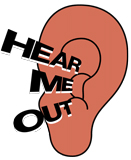

Lewis, editor of The Adoring Audience: Fan Culture and Popular Media, notes, this behavior is not unusual: “In fandom, moods and feelings become organized and particular…personas take on significance. The teenipop subculture was part of a lineage peculiar to the American 20th century: girls, increasingly younger with each incarnation, who strove for nothing more than unabashed happiness - and often projected their desire onto young, idolized males. They were almost ubiquitously female, high-school aged, and a member of the incomparably peppy teenipop subculture. As such, their fans were rabid, rivaling Beatlemaniacs in their intensity if not their number (which was admittedly meager). The members of Dream Street were only a year or two older than their average fan. But they were not of the same creed as the *NSync, Backstreet Boys, or even O-Town of the ’90s for one major reason: they were genuinely boys. They arrived together in coordinated outfits to awards shows and charity benefits. They danced synchronized suggestive movements onstage as they sang of true love. Dream Street was a boy band, yes it followed the formula set forth by management whiz Lou Pearlman, the creator of *NSync and Backstreet Boys: the blond baby brother, the dark-haired crooner, the sensitive quiet one, the tease most famous for his distinctive hair, the athletic All-American. They still wanted that special someone to sing to them, they wanted - to quote Dream Street’s album - “someone to hold tonight”. The crowd to whom Dream Street sung, winked, and pointed was holding onto more outwardly clean-cut ideals. Throughout these changing times, Dream Street represented something different than the mainstream. Twelve-year-old girls no longer wanted the nice boy who crooned sweet nothings in her ear. For most of America, the boy band era was over. However, by late 2002 the image of this milquetoast masculinity was no longer considered desirable as music groups like *NSync and Backstreet Boys had taken on a harder image and no longer found fame singing swooning lyrics that read like prepubescent blog entries. The androgynizing of the boy band was, at least until 2000, money in the bank. In its heyday, the ideal boy band image was best summed up by writer Janelle Brown as “a handful of clean-cut boys next door…turned…into fuzzy, desexualized plush toys that you’d feel safe leaving with your 14-year-old daughter”. The music scene was changing rapidly from effervescent, pure pop (*NSync’s eponymous 1998 American debut or Britney Spears’ …Baby One More Time in 1999) to cloudier, more R&B-influenced or post-pop punk fare (Sum41’s Fat Lip in 2001, B2K’s 2002 album Pandemonium). By the end of 2002, when Dream Street’s final hurrah was earned - the honor of a feature story in the Times - the boy band scene was reviled.

“There’s an endless supply of 12-year-old girls waiting for someone to sing to them,” wrote Emily White in her December 2002 New York Times article concerning the end of the band. I knew immediately of the actions of Dream Street, those beautifully stylized youths who could lift themselves, and me, in my infatuation-addled mind, from humdrum normalcy.

Like other teenipoppers, I dreamed of traveling to swinging London to become a royal and find a cute musician boyfriend, like Amanda Bynes’ Daphne Reynolds in the film What a Girl Wants of crashing a music video shoot and earning both a dancing role and a kiss beneath the mistletoe like Lizzie McGuire of jet-setting to swank European countries and going on unlimited shopping sprees with beautiful boys to a soundtrack of my favorite music like the peppy Olsen twins. In under a week, I had begun my own fansite, an amateur non-for-profit website that functioned as a massive shrine to the band, and within a month, I had become deeply immersed in the teenipop subculture. He was the most perfect boy I could have imagined.ĭiscovering Dream Street is one of the flashbulb memories of my life. He had spiky brown hair, a tan, and a blindingly white smile. We’d been kicking each other across the sofa all through the insipid Hey Arnold! on Nickelodeon when a commercial break came on and I saw the boy in the center, singing and dancing in a shining blue camouflage T-shirt and dark, baggy shorts. The average older sister that I was, I didn’t enjoy spending time with her, but I was grumpy that day, because it had been almost a month since I’d heard from my boyfriend. I was 14 years old, and I was watching cartoons with my sister, who was seven at the time. The first time I saw Dream Street was on July 8, 2001.


 0 kommentar(er)
0 kommentar(er)
